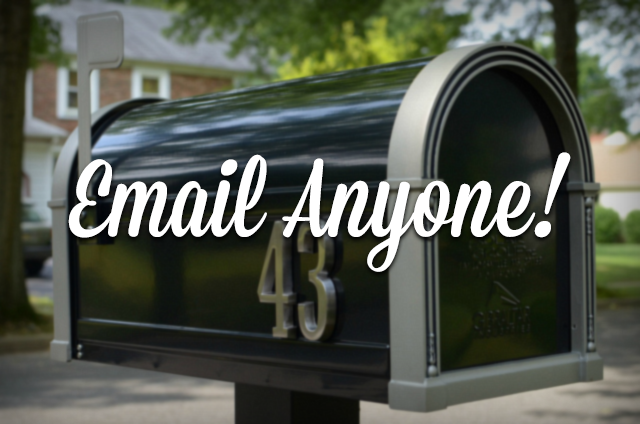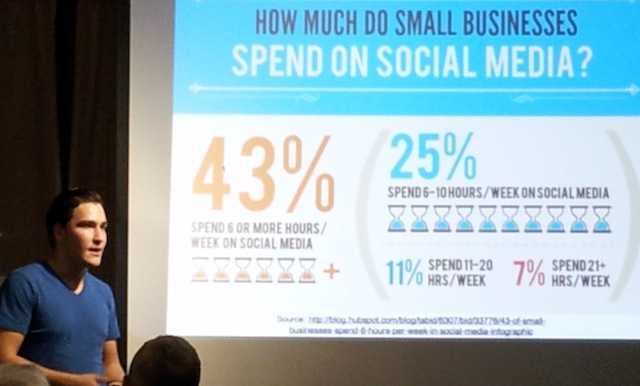Introduction
Overview of Roblox
Roblox is a renowned online platform that combines a gaming community with game creation tools, allowing users to design, play, and share games. Since its launch in 2006, Roblox has grown into a massive online universe where players and developers alike can create immersive experiences. It provides a unique opportunity for individuals of all ages to turn their creative ideas into playable games using Roblox Studio, the platform’s game development environment.
Significance of Game Development
Creating games on Roblox offers several benefits. For developers, it’s a chance to showcase their creativity and technical skills, potentially earning money through game passes and in-game purchases. For players, it provides a continually evolving landscape of new games to explore. Successful games can gain significant popularity, leading to a robust community of players and developers, and even monetary rewards through Roblox’s Developer Exchange Program.
Purpose of the Article
This article is designed to provide a comprehensive guide on creating a game in Roblox. It will cover everything from setting up Roblox Studio to publishing your game and promoting it. Whether you’re a complete novice or have some experience with game development, this guide will offer step-by-step instructions, tips, and best practices to help you create and share your own Roblox game.
Understanding Roblox Game Development
What is Roblox Studio?
Roblox Studio is the primary tool used for creating games on Roblox. It’s a powerful development environment that provides a wide range of features for game creation. Roblox Studio allows users to design game worlds, script gameplay mechanics, and test their games before publishing them. The interface includes various tools and panels that help streamline the development process.
Basic Features of Roblox Studio
- Explorer: This panel shows the hierarchy of all objects in your game, making it easy to manage and organize elements.
- Properties Panel: Here, you can adjust the settings and properties of selected objects in your game, such as size, position, and behavior.
- Terrain Tools: These tools allow you to create and manipulate the game world’s terrain, including adding hills, valleys, and bodies of water.
Roblox’s Game Types
Roblox supports a variety of game types, each offering unique gameplay experiences:
- Adventure Games: These games often involve exploration, quests, and challenges.
- Role-Playing Games (RPGs): Players assume roles in a fictional world, interacting with other players and participating in story-driven experiences.
- Simulation Games: These games replicate real-world activities or systems, such as running a business or managing a city.
- Action Games: Fast-paced games that focus on combat, strategy, or other high-energy gameplay mechanics.
Setting Up Roblox Studio
Downloading Roblox Studio
- Visit the Roblox Website: Go to the official Roblox website.
- Sign In: Log in to your Roblox account or create one if you don’t already have one.
- Download Roblox Studio: Click on the “Create” tab at the top of the page. Then, click on “Start Creating,” which will prompt you to download Roblox Studio.
- Install Roblox Studio: Open the downloaded file and follow the on-screen instructions to install Roblox Studio on your computer.
Creating a Roblox Account
- Go to the Roblox Website: Visit Roblox.
- Sign Up: Click on “Sign Up” and fill in the required information, including your username, password, and date of birth.
- Verify Your Account: Follow any additional steps to verify your email address or phone number if required.
Initial Setup and Interface
Upon opening Roblox Studio, you’ll encounter several key areas:
- Workspace: The main area where you build and arrange objects in your game.
- Toolbox: A library of pre-made models, textures, and assets that you can drag into your game.
- Viewports: Different camera views (e.g., top-down, side view) that allow you to see and edit your game from various perspectives.
Creating Your First Game
Starting a New Project
- Open Roblox Studio: Launch the application from your desktop or start menu.
- Select a Template: Choose from various templates (e.g., Baseplate, Obby, Racing) to start with a pre-designed layout, or select “New” to start from scratch.
- Name Your Project: Provide a name and description for your project to help identify it later.
Designing the Game World
Adding Terrain and Environment
- Access Terrain Tools: Go to the “Terrain” tab to find tools for creating and modifying terrain.
- Create Terrain Features: Use tools like “Add” and “Subtract” to shape your game world’s terrain. You can create mountains, valleys, and bodies of water.
- Texture Your Terrain: Apply textures to make the terrain look more realistic. Use the “Paint” tool to add different surface textures.
Placing Objects and Assets
- Open the Toolbox: Click on the “Toolbox” panel to access various assets.
- Search and Insert Assets: Use the search bar to find models, textures, and other assets. Drag and drop them into your game world.
- Position and Resize Objects: Use the Move, Scale, and Rotate tools to position and adjust the size of your objects.
Building Game Structures
- Create Structures: Use basic shapes (e.g., blocks, spheres) to build buildings, obstacles, or other structures.
- Customize Structures: Modify the properties of each structure, including material, color, and size.
- Add Interactivity: Incorporate interactive elements like doors, switches, and platforms using scripting.
Scripting and Gameplay Mechanics
Introduction to Lua Scripting
Lua is the scripting language used in Roblox Studio. It enables you to create complex gameplay mechanics and interactive elements. Understanding Lua is crucial for advanced game development on Roblox.
Basic Scripting Concepts
- Variables: Store data that can be used and manipulated in your scripts.
- Functions: Blocks of code that perform specific tasks. Functions can be called to execute code when certain events occur.
- Events: Triggers that activate scripts, such as a player touching an object or clicking a button.
Creating Interactive Elements
- Script Basic Interactions: Write scripts to make objects respond to player actions, such as opening a door when a player approaches it.
- Add NPCs and Quests: Script non-playable characters (NPCs) to provide quests or interact with players.
- Implementing Game Objectives: Create scripts that define and track game objectives, such as collecting items or reaching a destination.
Implementing Game Mechanics
- Player Movement: Script player controls and movement, ensuring smooth and responsive gameplay.
- Scoring Systems: Develop systems to track and display player scores or progress.
- Game Rules: Define the rules and conditions for winning or losing the game.
Testing and Debugging
Testing Your Game
- Use Play Mode: Click the “Play” button to test your game in Roblox Studio. This allows you to experience the game as a player would.
- Test Different Scenarios: Try different gameplay scenarios to ensure all aspects of the game work correctly.
Debugging Tools
- Output Panel: View error messages and script outputs in the Output panel to identify and fix issues.
- Explorer Panel: Use the Explorer panel to inspect and manage game objects and their properties.
- Breakpoints and Debugging: Set breakpoints in your scripts to pause execution and examine variables and script flow.
Iterative Development
- Make Adjustments: Based on your testing, make necessary adjustments to improve gameplay and fix issues.
- Repeat Testing: Continuously test your game as you make changes to ensure it functions as intended.
Publishing and Sharing Your Game
Preparing for Publication
- Final Checks: Review your game for any issues or incomplete elements before publishing.
- Set Game Properties: Define settings such as game genre, description, and accessibility options.
- Save Your Work: Ensure all changes are saved and backed up.
Publishing Your Game
- Open Publish Menu: Click on “File” and select “Publish to Roblox As.”
- Fill in Details: Provide details about your game, including name, description, and genre.
- Publish: Click “Create” to publish your game to Roblox.
Promoting Your Game
- Share on Social Media: Promote your game on social media platforms to attract players.
- Engage with the Community: Participate in Roblox forums and groups to spread the word about your game.
- Use Game Passes and Ads: Consider using in-game purchases and advertisements to increase visibility and revenue.
Enhancing Your Game
Using Plugins and Assets
- Explore the Roblox Library: Find and use additional plugins and assets to enhance your game’s functionality and appearance.
- Install Plugins: Download and install plugins from the Roblox Developer Hub to streamline your development process.
Adding Advanced Features
- Game Passes: Create game passes to offer exclusive features or items to players.
- Leaderboards: Implement leaderboards to display top players and encourage competition.
- Monetization: Explore monetization options, such as in-game purchases and premium currency.
Community Feedback
- Collect Player Feedback: Encourage players to provide feedback and suggestions for improvements.
- Incorporate Suggestions: Use feedback to make meaningful updates and enhancements to your game.
Best Practices and Tips
Game Design Principles
- Understand Your Audience: Design your game with your target audience in mind.
- Focus on Playability: Ensure that your game is enjoyable and easy to play.
- Balance Difficulty: Provide a balanced level of challenge to keep players engaged.
User Experience
- Intuitive Controls: Make sure controls are easy to understand and use.
- Engaging Gameplay: Create a compelling and immersive experience for players.
- Clear Instructions: Provide clear instructions and guidance within the game.
Regular Updates
- Fix Bugs: Regularly update your game to fix any bugs or issues.
- Add New Content: Keep players interested by adding new content and features.
- Monitor Performance: Continuously monitor game performance and make improvements as needed.
Troubleshooting Common Issues
Technical Problems
- Performance Issues: Optimize your game to improve performance and reduce lag.
- Script Errors: Debug and fix script errors that may affect gameplay.
Game Development Challenges
- Managing Large Projects: Use organizational tools and practices to manage complex game projects effectively.
- Collaborating with Others: Work with collaborators and ensure clear communication and coordination.
Conclusion
Recap of Key Points
Creating a game in Roblox involves several steps, from setting up Roblox Studio to publishing and promoting your game. By following the guide provided, you can successfully design, develop, and share your own Roblox game.
Encouragement for Aspiring Developers
Game development on Roblox offers a unique opportunity to turn your ideas into reality. Don’t be afraid to experiment and learn from your experiences. Start creating today and join the vibrant community of Roblox developers.
Invitation to Explore
Explore additional resources, tutorials, and community forums to further enhance your skills and knowledge. The Roblox Developer Hub and other educational materials provide valuable support and insights for aspiring game developers.
Additional Resources
Roblox Developer Hub
Visit the Roblox Developer Hub for official documentation, tutorials, and tools for game development.
Community Forums and Groups
Join Roblox Developer Forums and other community groups to connect with other developers, seek advice, and share your experiences.
Educational Tutorials
Check out video tutorials and online courses for in-depth learning about Roblox game development. Platforms like YouTube and Udemy offer valuable resources to enhance your skills.
By following this guide, you’ll be well on your way to creating and sharing your own games on Roblox. Happy developing!


